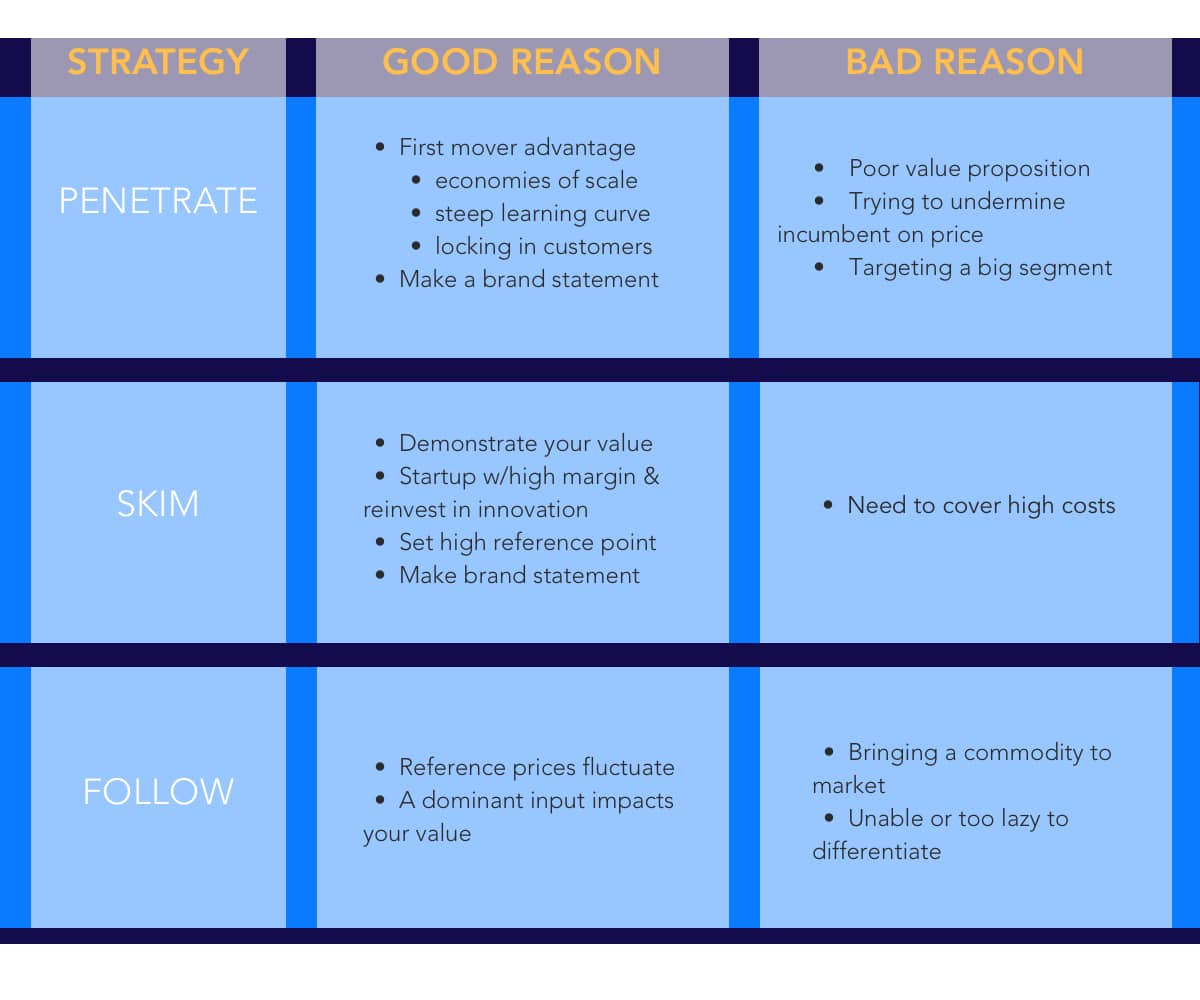Just how to Adjust Your Pricing Strategy for Different Market Segments
Just how to Adjust Your Pricing Strategy for Different Market Segments
Blog Article

Master Effective Rates Approaches to Maximize Revenue
In the ever-evolving landscape of commerce, mastering efficient pricing methods is essential for services aiming to make best use of revenue. A nuanced understanding of pricing psychology can significantly affect customer behavior and getting choices.
Understanding Prices Psychology
Comprehending prices psychology is essential for businesses aiming to optimize their prices techniques. This area checks out just how customers perceive rates and how these understandings influence their purchasing decisions. Key principles in pricing psychology consist of the anchoring impact, where the first cost offered functions as a referral factor for customers, and the idea of rate sensitivity, which varies amongst different client sections.
Additionally, companies can utilize the concept of perceived worth, where the viewed advantages of a product or solution can validate a higher cost factor. For example, costs pricing can create a mood of exclusivity, bring in consumers that associate higher rates with premium quality. On the other hand, emotional rates, such as setting a price at $9.99 as opposed to $10, can substantially influence customer habits by making costs show up a lot more eye-catching.
Additionally, deficiency and urgency can enhance the perceived value of items, triggering quicker acquiring decisions. Understanding these emotional triggers enables organizations to create pricing strategies that not only drive sales however additionally foster client commitment. Hence, grasping pricing psychology is crucial for effective rates method formulation, bring about improved earnings and market positioning.
Carrying Out Value-Based Pricing

Next, section your consumers based on their readiness to pay and the worth they perceive. By doing so, you can customize offerings and pricing approaches to align with different sectors.
Continuously keep an eye on market conditions and consumer responses to improve your pricing strategy over time. By carrying out value-based rates, services can boost productivity while cultivating lasting client commitment.
Exploring Dynamic Pricing Models
In today's swiftly altering market landscape, dynamic pricing models have become an effective approach for businesses seeking to enhance profits and reply to changes in need. These models allow companies to change their prices in real-time based on numerous aspects such as client behavior, market patterns, and supply degrees. By leveraging information analytics and formulas, services can identify ideal rates points that maximize sales while remaining competitive.
Dynamic rates can take various kinds, consisting of time-based prices, where costs fluctuate based on time of day or season, and demand-based pricing, which adjusts costs according to existing consumer need. This flexibility not just enhances productivity however likewise enhances customer fulfillment by supplying rates that reflect real-time market conditions.
Carrying out vibrant rates calls for a robust technological framework and a deep understanding of consumer segments. It is critical for businesses to keep an eye on market signals and consumer feedbacks continually, making certain that pricing techniques align with wider company goals. Transparent communication concerning prices changes can aid reduce consumer dissatisfaction and foster trust, eventually leading to continual profitability in a competitive market. Welcoming vibrant look at these guys rates can hence be a transformative technique in the mission for making best use of revenue.
Analyzing Rival Prices
Monitoring competitor pricing is essential for companies intending to keep a competitive edge in their particular markets. By assessing rivals' pricing approaches, business can recognize market trends, recognize customer preferences, and adjust their rates accordingly. This evaluation entails event data on rivals' prices, advertising methods, and product offerings to inform rates decisions.
To efficiently evaluate rival rates, businesses ought to make use of different devices and techniques, such as price tracking software application, marketing research records, and client comments. This information can disclose just how rivals place their solutions and products, enabling businesses to distinguish their offerings or embrace comparable techniques to continue to be relevant.
Additionally, it is important to classify competitors into indirect and direct rivals. Direct competitors use comparable service or products, while indirect rivals might accomplish the very same customer requirement with various solutions. Comprehending the subtleties between these teams investigate this site will certainly make it possible for companies to tailor their prices strategies a lot more effectively.
Inevitably, continuous competitor rates analysis is essential for making educated rates choices. It allows businesses to continue to be agile in response to market changes, guaranteeing they can take opportunities and minimize dangers connected with prices approaches.
Assessing Pricing Performance
Comprehending how competitor pricing affects market characteristics brings about an all-natural concentrate on assessing prices efficiency within one's own company. This analysis is important for determining locations of strength and opportunities for improvement, eventually boosting productivity.

Furthermore, performing normal pricing audits can expose discrepancies in between expected and real efficiency. This entails comparing prices data throughout various sections and channels to understand variations and identify trends. In addition, integrating customer responses can give insights right into perceived value versus real prices, making certain placement with market expectations.
Lastly, leveraging information analytics tools can assist in much deeper insights into pricing efficiency, allowing companies to make data-driven adjustments (Pricing Strategy). By continually link reviewing prices performance, companies can adjust to market modifications and enhance their approaches, guaranteeing continual success in a competitive landscape
Final Thought
By leveraging pricing psychology, services can improve perceived worth and tailor prices to varied consumer segments. The fostering of dynamic and value-based rates models assists in real-time adjustments based on need and customer determination to pay.
Recognizing rates psychology is essential for businesses aiming to maximize their pricing strategies. Recognizing these mental triggers allows companies to develop rates techniques that not just drive sales yet additionally foster consumer loyalty. Hence, mastering pricing psychology is essential for efficient rates strategy formula, leading to boosted profitability and market positioning.
By evaluating competitors' prices methods, companies can recognize market patterns, comprehend customer choices, and adjust their prices accordingly. By leveraging prices psychology, organizations can improve viewed worth and dressmaker prices to diverse client sections.
Report this page